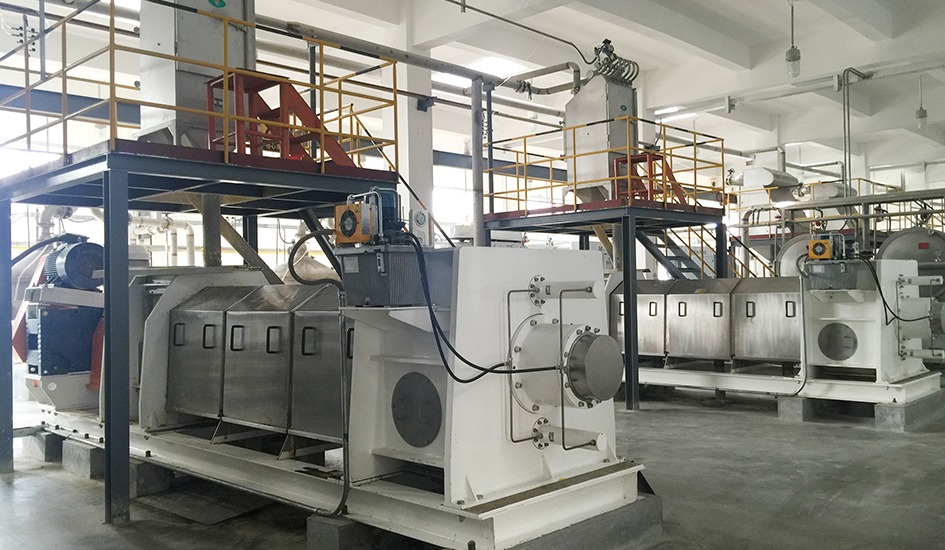
IMARC’s new report titled “Citric Acid Production Cost Analysis 2025: Industry Trends, Plant Setup, Machinery, Raw Materials, Investment Opportunities, Cost and Revenue,” provides a comprehensive roadmap for setting up a citric acid production plant. It covers vital aspects such as raw materials, equipment, labor, utilities, and capital investment. The citric acid production plant cost analysis helps stakeholders assess operational expenses and potential returns, enabling informed financial planning. This report is a valuable resource for entrepreneurs, investors, consultants, and industry professionals seeking to understand cost drivers and optimize production setup.
What is Citric Acid?
Citric acid is a naturally occurring organic acid found in citrus fruits like lemons, limes, and oranges. Chemically, it is a weak tricarboxylic acid that plays a crucial role in the metabolism of living organisms through the citric acid cycle, which helps produce energy. In industry, citric acid is widely used as a preservative, flavoring agent, and acidulant in food and beverages. Beyond the food sector, it finds applications in pharmaceuticals, cosmetics, and cleaning products due to its chelating and antioxidant properties. Citric acid is typically produced commercially through fermentation of sugar-containing substrates using specific strains of fungi. Its versatility, safety, and biodegradable nature make it an essential ingredient across multiple sectors. The demand for citric acid continues to grow as consumers prefer natural and safe additives, and manufacturers increasingly adopt it as a multifunctional ingredient for quality enhancement in products.
Market Trend and Drivers of Citric Acid:
The citric acid market is experiencing steady growth due to increasing demand from the food and beverage industry, where it is used as a natural preservative and flavor enhancer. Rising health awareness among consumers is driving preference for clean-label and naturally derived ingredients, further boosting citric acid consumption. The pharmaceutical sector is also contributing to growth, as citric acid is used in effervescent tablets, syrups, and dietary supplements. Additionally, the cleaning and cosmetic industries are leveraging citric acid for its biodegradable and chelating properties. On the production side, advancements in fermentation technology and sustainable sourcing methods are improving efficiency and reducing costs. The Asia-Pacific region, led by China and India, remains a key production hub, while global exports are expanding to meet growing demand in North America and Europe. Increasing industrial applications and consumer preference for natural ingredients continue to drive market growth.
Key factors for setting up a citric acid production plant:
- Market Research
Market research in the citric acid industry focuses on production capacity, consumption trends, pricing dynamics, and competitive analysis. Key insights include identifying emerging applications in pharmaceuticals and cosmetics, evaluating regional demand growth, and tracking innovations in microbial fermentation techniques. Understanding supply chain challenges, such as raw material availability and energy costs, helps manufacturers optimize production and plan investments. Comprehensive market intelligence provides stakeholders with actionable data to make informed strategic decisions, forecast future demand, and enhance operational efficiency.
The report offers an exhaustive overview of the global citric acid industry, including a detailed breakdown by segments and regions within the sector. It also includes in-depth analyses of prices involved, market trends and historical data and forecast.
- Market Forecast
- Price Analysis
- Market Breakup by Region
- Market Breakup by Segment
- Market Trends
Request for a Sample Report: https://www.imarcgroup.com/citric-acid-manufacturing-plant-project-report/requestsample
2. Planning and Designing
A detailed and up-to-date business plan is indispensable for mapping out the steps to establish and operate a citric acid production facility. This report offers in-depth details about the process flow and the various unit operations involved in a citric acid production plant.
- Technical Tests
- Quality Assurance Criteria
- Mass Balance and Raw Material Requirements
- Unit Operations Involved
- Product Overview
- Legal and Regulatory Compliance
Understanding and complying with the intricate framework of business laws and regulations is a vital aspect of establishing a citric acid production facility. This requires a detailed knowledge of legal obligations, such as labor laws, environmental standards, tax policies, and industry-specific regulations.
- Plant Requirements and Costs
The report offers a detailed location analysis, including insights into land selection, key criteria, location importance, environmental considerations, and associated costs for establishing a citric acid production facility. It also provides information on plant layout and the factors that impact its design.
- Human Resource Requirements and Costs
- Utility Requirements and Costs
- Transportation Requirements and Costs
- Packaging Requirements and Costs
- Raw Material Requirements and Costs
- Machinery Requirements and Costs
- Plant Layout
- Land, Location and Site Development
- Hiring and Training
Effective workforce planning and recruitment strategies are critical for assembling a skilled and efficient team to manage a citric acid production plant. This process includes identifying the specific skills and qualifications needed for different roles and anticipating future staffing requirements based on production goals and business expansion.
- Developing Health and Safety Protocols
- Implementing Training Programs for Employees
- Complying with Labor Laws and Regulations
- Supply Chain Management
Building strong partnerships with suppliers and vendors is crucial to maintaining a dependable and cost-efficient supply chain. This requires choosing partners who can reliably deliver high-quality raw materials and components at competitive rates.
- Planning Logistics and Transportation Networks
- Implementing Efficient Inventory Management Systems
- Project Economics
This entails a thorough analysis of the costs associated with a citric acid production plant, covering capital expenditure (CapEx), operating expenditure (OpEx), income forecasts, taxation, depreciation, liquidity, profitability, payback period, net present value (NPV), uncertainty, sensitivity assessments, etc. In addition to this, it includes an in-depth review of financial assistance options and a comprehensive list of certifications necessary for establishing the plant.
- Financial Analysis
- Profit Projections
- Taxation and Depreciation
- Revenue Projections
- Expenditure Projections
- Operating Costs
- Capital Investments
- Marketing and Distribution Strategies:
Creating a robust marketing strategy and establishing strong brand positioning are vital for building a production plant’s market presence. This process includes conducting thorough market research to identify customer needs, preferences, and competitive trends.
- Identifying Distribution Channels and Sales Networks
- Leveraging Digital Marketing and E-Commerce Platforms
- Participating in Trade Shows and Industry Events
About Us:
IMARC Group is a global management consulting firm that helps the world’s most ambitious changemakers to create a lasting impact. The company excel in understanding its client’s business priorities and delivering tailored solutions that drive meaningful outcomes. We provide a comprehensive suite of market entry and expansion services. Our offerings include thorough market assessment, feasibility studies, company incorporation assistance, factory setup support, regulatory approvals and licensing navigation, branding, marketing and sales strategies, competitive landscape, and benchmarking analyses, pricing and cost research, and procurement research.
Contact Us:
IMARC Group
134 N 4th St. Brooklyn, NY 11249, USA
Email: sales@imarcgroup.com
Tel No:(D) +91 120 433 0800
United States: (+1-201971-6302)


